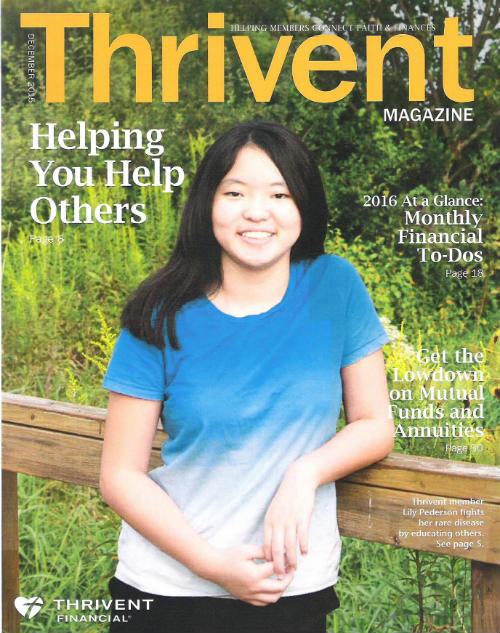Have you ever wanted to share your story with news media? It can be a great way to spread awareness about postural orthostatic tachycardia syndrome (POTS) and help others understand what it's like to live with POTS. If you have wondered how to go about doing it, here are some tips for getting your story picked up by newspapers or local television stations.
There are a variety of avenues to generate publicity in our own communities. Perhaps you have a fundraising event coming up – contact the calendar editor of your local newspaper to get the details into the newspaper. Has something special happened to a person with POTS that would make a good column – contact your local columnist? What about submitting a letter to the editor about POTS? Is there an upcoming event that the local news might want to cover?
Contact the media outlet of your choice one to three months before your target publication date. Press releases to daily or weekly papers should be sent four to six weeks before the event that you want to have covered. Monthly magazines typically require your press release and photos two to three months before publication. Public service announcements for the radio also require two to three months advance notice because they need time to rotate through the press releases that they have already received.
Step 1: Finding your story’s angle.
You need to highlight the human interest element of your story to make it appealing to a reporter and later the general audience. You might start by answering these questions:
- Who are the key players?
- What is new?
- Why is this important news?
- Where is this happening? Is there a geographical angle?
- When will the event occur?
- How did this come about?
Step 2: Choosing your media outlet.


There are several options when deciding how to advertise your story. Pay attention to the areas of interest of different media outlets, writers, and reporters in your area. Read back issues of their publications or tune into the program that you are targeting. Tailor your story to fit your target media outlet.
Press and media include:
- Local press (newspapers in your area)
- Calendar event
- Column
- Letter to the editor
- News report
- Specialist press (publications specific for groups of people, e.g. college magazines, company newsletters)
- Ezines
- Podcasts
- Radio interviews
- Storycorps stories
- National press
Step 3: Writing your press release.
Submit clear and accurate written materials. Highlight the human interest angle of your article. You may have to go through several revisions to get short, punchy sentences. Write the press release toward your target audience.
- Include a title that you highlight by using CAPITAL LETTERS or boldface font.
- The first sentence of the release should be short and interesting, while sharing the main gist of the article.
- The first paragraph needs to include the what, where, who, when, and why of your topic. Two sentences of 25 words or less is appropriate for the newspaper.
- The second paragraph expands on the information in the first paragraph with more detail.
- The third paragraph generally provides a quote to back up your assertion.
- The final paragraph should include a call to action. What do you want the readers to do as a result of the article? Include the full details of the event, your website and contact information in the last paragraph.
If you are including photographs, only send high quality, labelled pictures. JPEG files are generally what the media want as they can use it easily in print. Include captions for any photographs that you submit. It is also acceptable to write a Notes to the Editor section at the end and say that photos are available upon request.
Step 4: Email your press release to the appropriate person in the media outlet of your choice.
Call to confirm that you have found the most appropriate contact person for your story. During the call, confirm that you formatted everything correctly for that particular establishment. Usually, the media prefers that you email your press release, photos, or videos to them. Cut and paste the press release into the body of your email to avoid issues with opening an attachment.
Step 5: Follow up if you don’t hear a response within two days.


Call the office if you don’t get a response to your email. Be persistent. Confirm that they received your press release, and ask if they need more information or additional photographs. Stop only when they say no to the story or sound annoyed. Don’t burn bridges – they may be more interested in your next press release!
Step 6: Keep the press fully informed of changes in your story.
Printing inaccurate information reflects poorly on both the reporter and their company. This may hurt your chances for future coverage. If the changes are significant, revise and resubmit your original release as soon as possible.
Step 7: If a member of the press attends an event that you’ve announced, provide them with a press packet.
Often, the press packet is a CD with great background information on it. The press packet generally includes the original press release, a fact sheet about POTS in this case, background information on the event, and relevant photographs. This makes it easy for the reporter to check his/her facts quickly when writing the story later.
Getting on television
If you are trying to get a television or radio interview, you follow the above, but you will want to add a short video of you being interviewed about the topic you are trying to sell them. Having a friend interview you and tape your responses can increase your chances of getting on TV if you gave a good interview. Producers are looking for people who are articulate, interesting, coherent, and mindful of the time constraints (can give short answers).